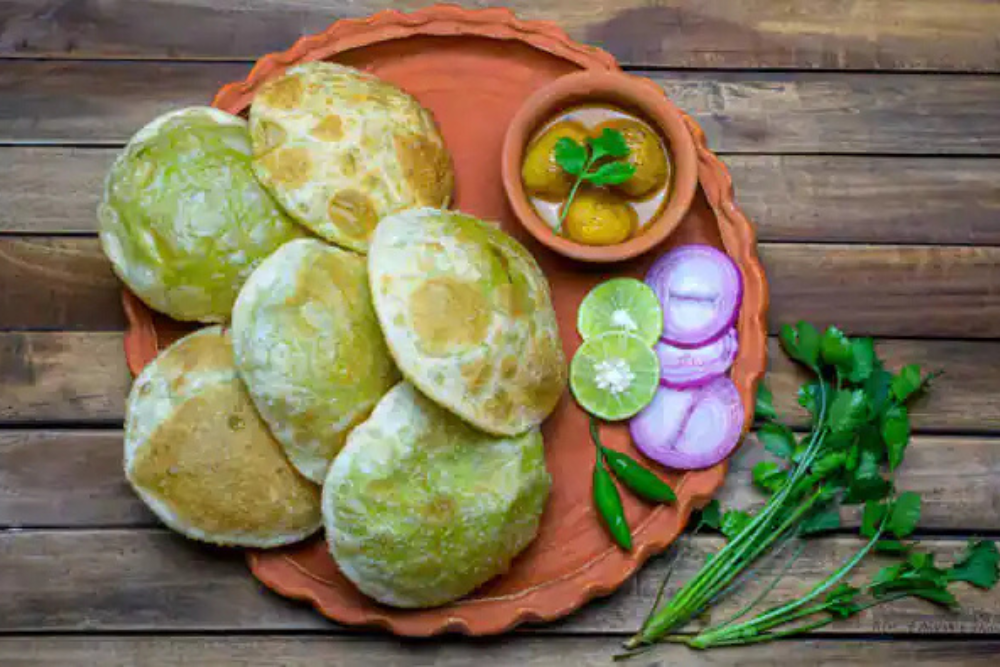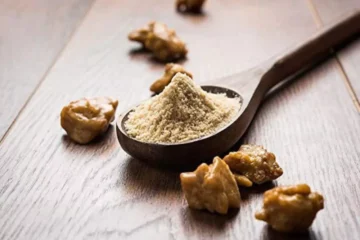Looking to spice up your kitchen with something crispy, tangy, and comforting? The Hing Kachori Recipe brings flavor, health, and tradition to your plate. Made using asafoetida (hing), this kachori offers more than just taste—it aids digestion and adds depth to your snack-time experience.
What makes hing kachori different from regular kachori — is the taste or digestion benefit better?
Hing kachori is unique because it blends strong flavour with digestive benefits, unlike regular kachoris that rely solely on spice and stuffing.
Here’s how hing kachori stands out in both taste and health:
- Flavor depth: Hing offers a sharp, pungent aroma that elevates the overall profile of the kachori.
- Digestive benefits: Asafoetida is well-known in Ayurveda for reducing bloating and gas.
- Reduced need for other spices: The dominance of hing reduces the dependency on heavy masalas.
- Authenticity: Hing kachori has roots in Rajasthani cuisine, making it more culturally significant.
- Aftertaste experience: The subtle bitterness of hing leaves a long-lasting savory impact.
Can I make hing kachoris healthier without compromising on spice and texture?
Yes, you can make hing kachoris healthier by using baking, alternative flours, and controlled spice blends—without sacrificing taste or crunch.
Try these healthier alternatives while making your hing kachori recipe:
- Bake instead of deep-fry: Use an oven or air fryer to reduce oil intake significantly.
- Use whole wheat flour: Swap out maida with atta for higher fibre content.
- Sprouted moong stuffing: Replace regular dal stuffing with sprouted lentils for better nutrition.
- Reduce salt and chilli: Use rock salt and mild green chilies to reduce acidity and hypertension risk.
- Brush oil lightly: Even if you’re shallow frying, limit oil use by brushing instead of pouring.
Is it okay to eat hing kachoris if I have mild acidity or gut sensitivity?
Yes, but in moderation. Hing kachoris are gut-friendly due to the presence of asafoetida, but spice levels and frying methods must be adjusted.
If you have gut issues or acidity, follow these tips while enjoying hing kachoris:
- Use minimal red chili: Opt for mild spices like fennel or cumin to avoid triggering acid reflux.
- Roast stuffing instead of frying: This helps reduce heaviness and oil absorption.
- Add ajwain (carom seeds): Ajwain enhances digestion and reduces gastric discomfort.
- Serve with curd: Curd balances the spice and soothes the stomach lining.
- Eat warm, not hot: Lukewarm kachoris are easier to digest and less harsh on sensitive stomachs.
How long does the hing flavor last in kachoris, and how should I store them for best taste?
The hing aroma in kachoris lasts up to 2 days if stored properly in an airtight container. Refrigeration can extend shelf life up to 4 days.
Use the following table for storage methods and shelf life:
| Storage Method | Container Type | Duration | Tip |
|---|---|---|---|
| Room Temperature | Airtight steel or glass | 1–2 days | Keep away from moisture |
| Refrigerator | Airtight plastic or glass | 3–4 days | Reheat in oven or pan, not microwave |
| Freezer | Zip lock + foil | Up to 10 days | Thaw naturally, then toast |
Can I serve hing kachoris with dips or sides that complement the spice and aid digestion?
Absolutely! Hing kachoris pair wonderfully with dips like mint chutney, curd, or tamarind sauce to balance spice and promote digestion.
Best accompaniments to serve with your hing kachori recipe:
- Mint-coriander chutney: Fresh, cooling, and packed with digestive enzymes.
- Tamarind chutney: Slightly sweet and tangy, perfect for cutting through the spice.
- Curd or raita: Adds a probiotic boost while calming the stomach.
- Boondi raita: Offers crunch and smoothness together, aiding gut function.
- Ginger tea: A warm beverage that helps digest fried snacks like kachoris.
Bonus: Quick Hing Kachori Recipe
Here’s a simple hing kachori recipe you can try at home:
- Ingredients:
- 1 cup whole wheat flour
- 1/4 tsp hing (asafoetida)
- 1/2 cup moong dal (soaked & ground)
- 1 tsp cumin seeds
- 1/2 tsp turmeric
- Salt to taste
- 2 tbsp oil + extra for frying/baking
- Preparation:
- Make dough with flour, salt, oil, and water. Let it rest 20 minutes.
- Cook moong dal with spices, hing, and a little oil until dry.
- Roll out dough balls, stuff with filling, and seal tightly.
- Fry until golden or bake at 200°C for 20 minutes, flipping halfway.
Conclusion
Hing Kachori Recipe isn’t just another Indian snack—it’s a flavorful, health-conscious choice that blends taste with tradition. Whether you’re looking to lighten it up or enjoy the full Rajasthani experience, hing kachori fits every preference. With smart storage, digestion-friendly sides, and quick tweaks, it’s a recipe worth repeating in every Indian kitchen.
Try it once, and you’ll understand why hing makes all the difference!





